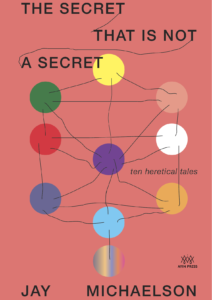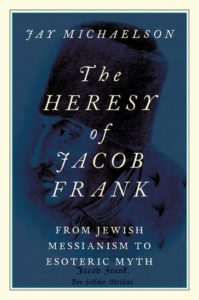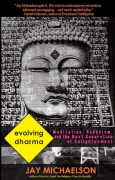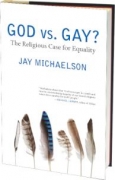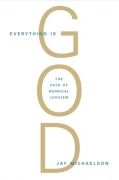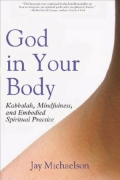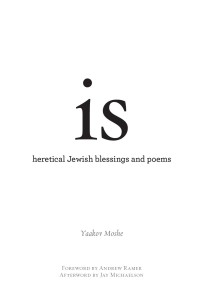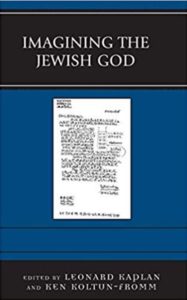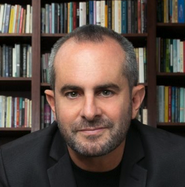The Queernesses of Sabbatean Mystical Messianism
Free to conference attendees
at American Academy of Religion
Denver, CO
More Info / Registration
Session at the 2022 American Academy of Religion conference:
The Jewish mystical-messianic movements of Sabbetai Zevi (1626-1676) and his two main heirs, Beruchiah Russo (1676-1721) and Jacob Frank (1726-1791), transformed Judaism, undermined rabbinic authority, and created a new, detemporalized mystical messianism that significantly influenced early Hasidism and subsequent Jewish spiritual revivals.
They were also, in both heresiological fantasy and actual reality, closely associated with sexual transgression and sexual liberation – that is, the radically queering of normative religious sexual ethics and praxis. This paper analyzes three layers of this queering, in increasing levels of generality: non-heterosexual and non-cisgender rhetorics and practices; abrogating traditional gender and sexual norms; and questioning the categories of and boundaries around mysticism, Judaism, and even conventional society and reality.
The paper begins by acknowledging that it is often difficult to distinguish truth from hyperbolic heresiology. Heretics have been accused of sexual transgression for thousands of years, even when the heresies in question demanded asceticism. Even in contemporary scholarship, Sabbateanism and Frankism are often closely associated with licentiousness, often on the basis of very limited basis and rumors initially promulgated by the sects’ persecutors. (The most famous instance of Frankist sexual antinomianism, involving a the sect dancing around a partially-unclothed teenage girl, may not have even occurred; there is no documentary evidence, it was denied by the sect, and our main account comes from the extreme heresiologist R. Jacob Emden, who had made hyperbolically sexualized and unsubstantiated claims before.) On the one hand, the study of Sabbatean and Frankist sexual praxis should reject the sex-negativity biases of conservative scholars and heresiologists and understand what these antinomian practices meant to practitioners. On the other hand, the evidence that exists for such practices may be based on the inventions of the sects’ opponents.
The first and relatively narrow layer of queerness consists of non-normative sexual and gender elements, including homoerotic religious rhetoric and hymns in which believers of all genders professed an erotic love for the beautiful messiah, Sabbetai Sevi; a conception of Sevi as “secretly female” and thus as a bi-gendered or (speaking anachronistically) transgender messiah; rumors of same-sex attachments between Sevi and young followers; and rumors of Beruchiah Russo’s having worked as a young male sex worker. Jacob Frank, in contrast, was voraciously heterosexual (even toxically masculine) in deliberate opposition to these “effeminate” and “female” messianic figures. Yet his role was to pave the way for a female messiah. This complex gender play may be understood as a queer remasculinization of the Jewish hero: like a knight in the quasi-chivalric tales he tells, Frank is masculine enough to liberate the ‘Maiden’ messiah, construed as the embodiment of eros and the overthrow of sexual repression, paradoxically so that she may rule over him. Frank’s masculinity enables femininity qua sensuality to prevail.
Second, and more broadly, the Sabbatean and Frankist movements made a number of revolutionary changes in sexual and gender norms. Most importantly, women held positions of power, leadership and spiritual authority in the movements (which, as Ada Rapoport-Albert showed, precipitated many of the attacks, rumors, and slanders against them, such as claims that Sarah Ashkenazi, Sabbatai Zevi’s wife, had been a sex worker or that Jacob Frank committed incest with his daughter Eve). Sabbateanism and Frankism also maintained that some of the laws governing sexual expression had been nullified by the coming of the messiah, and engaged in limited, tightly choreographed sexual ritual such as the doenmeh’s Festival of the Lamb. More broadly still, Jacob Frank enunciated a principled-libertine rejection of conventional sexual morality, based on a rejection of religion as ineffective and contrary to the Divine will that human beings flourish. While these innovations were not queer in the narrow sense of affecting LGBTQ+ identities or acts, they radically queered the normative conceptions of gender roles and sexual morality in general.
Third, and most expansively, the Sabbatean and Frankist movements crossed, problematized, and in the broad sense queered boundaries demarcating the ‘mystical’ and the messianic, the Jewish and the non-Jewish, even the real and unreal. Sabbateanism shifted the messianic experience from a historical redemption to a de-historicized personal experience – an innovation adapted by Hasidism. The messianic became the erotic-mystical, and the queer act of sexual transgression was the transitory embodiment and realization of messianic truth. In addition, following Sabbetai’s conversion to Islam in 1666 (having already been significantly influenced by Sufism), some of his most faithful followers converted outwardly as well, eventually creating a 250 year “secret” sect of Crypto-Jews known as the doenmeh, who lived in a kind of glass closet in which their duplicity was an open secret but not overtly acknowledged. Asserting that the messianic age had already begun, the doenmeh lived in a kind of twilight world in which all appearances were false and the redeemed reality could only be glimpsed through faith and transgression.
On all three of these levels – homoerotic and poly-gendered rhetorics; the leadership of women and the transformation of gender roles; and the destabilization of religious and even ontological boundaries – the Sabbatean and Frankist movements brought together a queering of sexual and gender roles with a queering of the meaning of mystical and messianic experiences. In so doing, they invite reflection on how those phenomena may be related.
